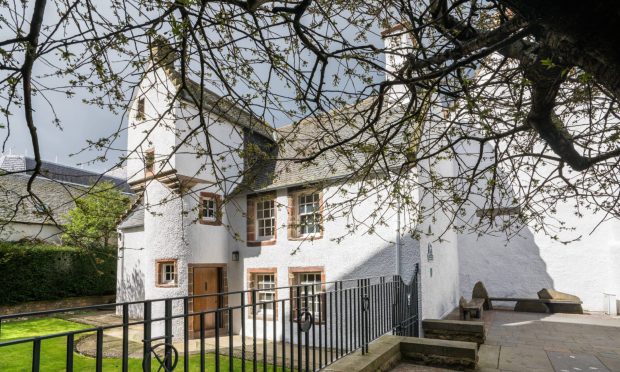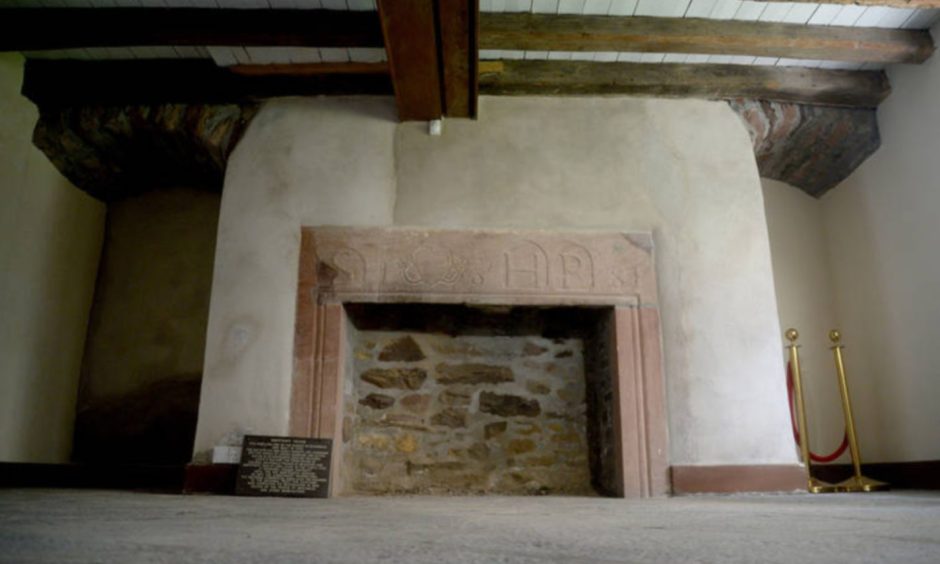When a newly-wed couple began their life together in Inverness they also started a mystery that would last hundreds of years.
The initials AS and HP, alongside the date 1681, carved into a marriage stone above the main fireplace in the city’s Abertarff House, have long puzzled historians and visitors.
The landmark, dating to the late 1500s, in the oldest secular building in Inverness.
Now run by the National Trust for Scotland (NTS), it re-opens for members and supporters for the season today with a new piece of history to relate.
Extensive research on the initials
The conservation charity’s experts have been intrigued by the initials since the building came into the trust’s care in 1963.
Now, some 343 years after they were carved, their story has been revealed.
Historian Dr Jim Mackay’s extensive research has helped to solve the puzzle.
Dr Mackay, who chairs the Kirkmichael Trust in the Black Isle, discovered the initials were those of Helen Pape and Alexander Stewart who lived in what is now Abertarff House.
Helen, the daughter of a Cullicudden minister, Reverend Charles Pape, married Alexander, an Inverness sea captain and merchant.
It is thought they lived in the house from 1681 until Alexander’s death in 1720.
His son John, the subject of the antiquarian history The Letter-book of Bailie John Steuart, lived at Abertarff House until he died in 1751.
The Stewart family owned the building for three generations during a time of unrest and turmoil, notably the 1715 Jacobite Rebellion.
The property was sold in 1771 on the death of Bailie John’s daughter Margaret.
Adding colour to Abertarff House history
Gail Cleaver, NTS operations manager for Culloden, Abertarff House and Hugh Miller’s Cottage, said: “We are grateful to Dr Mackay who has helped us to solve a puzzle more than 300 years old, adding further colour to the history of this significant building and the stories we share with our visitors.
“As Scotland’s largest conservation charity, we are privileged to protect, care for and share the heritage of places like Abertarff House, which has witnessed huge moments in our country’s history: the Covenanters’ era, Jacobite risings and two world wars.
“An example of Scottish domestic architecture of the 16th and 17th centuries, it makes an important contribution to the historic streetscape of Church Street in Inverness and to what we know about the city’s heritage.”
Abertarff is the oldest residential house in Inverness and was also once owned by the Fraser of Lovat family, whose clansmen fought on the Jacobite side at the Battle of Culloden.
In the 19th century it was acquired by the Commercial Bank of Scotland, but after being split up for housing the site fell into disrepair.
It was gifted to the NTS in 1963 and restored in 1966.
Over the past 50 years the building has served a number of purposes, including the headquarters for An Comunn Gàidhealach, a shop and the NTS regional headquarters.
Last year it had to delay opening during the tourist season due to a staffing problem.
Abertarff House is open over the Easter weekend from 10am until 4pm, and then Tuesday to Saturday 10am until 4pm.
Join our Facebook group for the latest news and updates from Inverness



Conversation